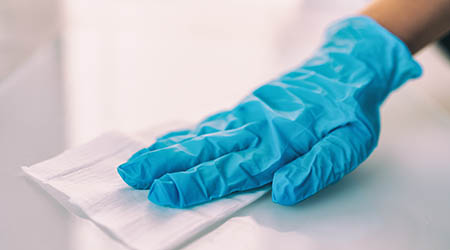Since the earliest days of the COVID-19 pandemic, healthcare facilities managers and other interested parties have wondered about the role surfaces play in transmitting the illness. Now, research is starting to shed light on the surface-transmission connection.
A new study by University of California (UC) Davis researchers confirms the low likelihood that SARS-CoV-2 contamination on hospital surfaces is infectious. In April 2020, a COVID-19 outbreak among hospital staff led an interdisciplinary team of UC Davis researchers to investigate if there was virus contamination of frequently used surfaces in patient serving ICU and staff meeting areas at the UC Davis Medical Center. At that time, the role of surfaces in spreading the disease was highly debated. They collected multiple samples during the April 2020 and the August 2020 waves of COVID-19 from surfaces and HVAC filters in the hospital.
Despite a significant increase in the number of hospital patients with COVID-19 during the second surge, the team found that only 2 percent of swabs tested positive in August, compared to 11 percent of samples collected in April. The reduction in the virus contamination was likely due to improved ICU patient management and cleaning protocol, according to Angela Haczku, a respiratory immunologist and senior author on the study.

 Why Identity Governance Is Becoming a Facilities Management Issue
Why Identity Governance Is Becoming a Facilities Management Issue Habitat Health Opens South Los Angeles PACE Center
Habitat Health Opens South Los Angeles PACE Center Denton County MHMR Center Suffers a Data Breach
Denton County MHMR Center Suffers a Data Breach What Every EVS Leader Needs To Know
What Every EVS Leader Needs To Know Blackbird Health Opens New Clinic in New Jersey
Blackbird Health Opens New Clinic in New Jersey